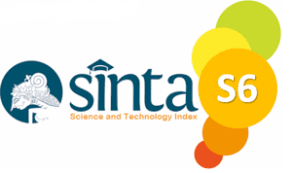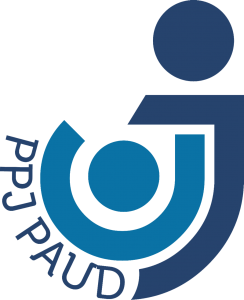Meningkatkan Kosakata Bahasa Arab Anak Usia 5-6 Tahun melalui Metode Bernyanyi
Improving Arabic Vocabulary for 5-6 Year Old Children through Singing Method
DOI:
https://doi.org/10.37680/absorbent_mind.v4i2.6413Keywords:
Children Age 5-6 Years, Singing Method, VocabularyAbstract
Language skills, especially the ability to master Arabic vocabulary, are very important skills to master, especially in early childhood. Language learning for early childhood is expected to be taught through more interesting activities, one of which is singing. The purpose of this study was to explore improving the Arabic vocabulary of children aged 5-6 years through the singing method. This research method is qualitative research with a literature review derived from the analysis of research journal articles. The results of the study indicate that improving children's vocabulary can be applied by teachers through the singing method well and effectively because teachers have talent, ability and innovation in implementing different learning methods according to the character of students and their schools.
References
Abidin, Z., Fatonah, I., & Septiyana, L. (2019). Pola Pengembangan Potensi Kecerdasan Emosional Dan Spiritual Anak Penyandang Autisme. AWLADY: Jurnal Pendidikan Anak, 5(2), 95–116.
Agustina, M. W. (2023). Pengaruh Phonological Awareness Dan Kemampuan Pemrosesan Ortografi Terhadap Kemampuan Membaca Awal Siswa Sekolah Dasar. 2(2), 119–131.
Anggraini, V. (2019). Stimulasi Keterampilan Menyimak terhadap Perkembangan Anak Usia Dini. Raudhatul Athfal: Jurnal Pendidikan Islam Anak Usia Dini, 3(1), 30–44. https://doi.org/10.19109/ra.v3i1.3170
Arintistia, N., & Acmad Kholik, J. (2022). Inovasi Pembelajaran Menulis Huruf Hijaiyah Di TPQ As-Syifa Bangsal. Kontribusi: Jurnal Penelitian Dan Pengabdian Kepada Masyarakat, 2(2), 75–82. https://doi.org/10.53624/kontribusi.v2i2.63
Astomo, P. (2021). Politik Hukum Penyelenggaraan Sistem Pendidikan Nasional Yang Responsif Di Era Globalisasi. Masalah-Masalah Hukum, 50(2), 172–183.
Astutiningsih, C., Tjahjani, N. P., & Listyani, L. (2021). Pengenalan Profesi Apoteker dan Mengenali Obat Sejak Usia Dini. Jurnal Abdidas, 2(3), 713–719. https://doi.org/10.31004/abdidas.v2i3.344
Efflamengo, L., & Asyrofi, S. (2020). Analisis Faktor Kesulitan Belajar Bahasa Arab pada Siswa Tunanetra di MAN 2 Sleman. EDULAB: Majalah Ilmiah Laboratorium Pendidikan, 4(2), 43–58. https://doi.org/10.14421/edulab.2019.42-03
Fahri, L. M., & Qusyairi, L. A. H. (2019). Interaksi Sosial dalam Proses Pembelajaran. PALAPA, 7(1), 149–166. https://doi.org/10.36088/palapa.v7i1.194
Harini, H., Wahyuningtyas, D. P., Sutrisno, S., Wanof, M. I., & Ausat, A. M. A. (2023). Marketing strategy for Early Childhood Education (ECE) schools in the digital age. Jurnal Obsesi: Jurnal Pendidikan Anak Usia Dini, 7(3), 2742–2758.
JR, R. R., Luthfi, A., & Fauziddin, M. (2018). Pengaruh Metode Bercerita terhadap Kemampuan Menyimak pada Anak Usia Dini. Aulad : Journal on Early Childhood, 1(1), 39–51. https://doi.org/10.31004/aulad.v1i1.5
Kusumastuti, N., Putri, V. L., & Wijayanti, A. (2021). Pengembangan Media Frueelin Untuk Meningkatkan Perkembangan Kognitif Anak Usia Dini. Jurnal Golden Age, 5(01), 155–163.
Mundiri, A., & Hamimah, S. (2022). Early Childhood Behavior Management Strategy based on Fun Learning Environment. Jurnal Obsesi: Jurnal Pendidikan Anak Usia Dini, 6(4), 2583–2595.
Murdiono, M., Taufiq, H. N., & ... (2023). Pendampingan Pembelajaran Bahasa Arab untuk Guru TK Aisiyah Bustanul Athfal 33 Ngijo Karangploso. ABDI UNISAP: Jurnal …, 1, 206–211.
Prasetyo, I. T. (2018). Penguasaan Bahasa Anak Penderita Down Syndrome Di Slb Abcd Yayasan Suka Dharma Polokarto Kabupaten Sukoharjo. Nuansa Indonesia, 20(20), 119–132.
Putri, W. D., & Fitria, N. (2021). Pengaruh video pembelajaran cerita dan lagu terhadap kemampuan berbicara anak. Jurnal Anak Usia Dini Holistik Integratif (AUDHI), 2(2), 102–113.
Rahayu, P. (2019). Pengaruh era digital terhadap perkembangan bahasa anak. Al-Fathin: Jurnal Bahasa Dan Sastra Arab, 2(01), 47–59.
Rahmi, A., & Saputri, H. (2022). Pembelajaran Matematika Melalui Kegiatan Memancing Pada Anak Usia Dini Di Taman Kanak-Kanak Twin Course Pasaman Barat. JURNAL PAUD, 1(01), 9–14.
Ramlah, R., Riana, N., & Abadi, A. P. (2022). Fun Math Learning For Elementary School Students Through Interactive Puzzle Media. SJME (Supremum Journal of Mathematics Education), 6(1), 25–34. https://doi.org/10.35706/sjme.v6i1.5775
Sekar Setyaningtyas, Indarmawan Nugroho, B., & Arif, Z. (2022). Tinjauan Pustaka Sistematis: Penerapan Data Mining Teknik Clustering Algoritma K-Means. Jurnal Teknoif Teknik Informatika Institut Teknologi Padang, 10(2), 52–61. https://doi.org/10.21063/jtif.2022.v10.2.52-61
Sholichah, A. S., Solihin, S., Rahman, B., Awi, W., & Muqit, A. (2022). Penguatan Profesionalisme Guru dalam Mengembangkan Literasi Digital Kegamaan (Studi di SMP Islamic School al-Bayan Jakarta). Edukasi Islami: Jurnal Pendidikan Islam, 11(01), 433–454.
Downloads
Published
How to Cite
Issue
Section
License
Absorbent_mind; Journal of Psychology and Child Development allow the author(s) to hold the copyright without restrictions and allow the author(s) to retain publishing rights without restrictions, also the owner of the commercial rights to the article is the author.
License:
- Attribution: You must provide an appropriate name, include a link to the license, and certify that changes have been made. You can do this in an appropriate manner, but do not imply that the licensor supports you or your use.
- Share Alike: If you compose or make derivatives of these materials, you must distribute your contributions under the same license as the original materials.
- No additional restrictions: You may not use legal provisions or technological means of control that legally restrict others from doing the things this license allows.
You are free to:
- Share, copy, and redistribute this material in any form or format.
- Adapt, modify, and create derivatives of this material for any purpose, including commercial purposes.
- The licensor cannot revoke the above terms as long as you comply with the terms of this license.
Creative Commons Attribution-ShareAlike 4.0 International License (CC BY-SA 4.0).






